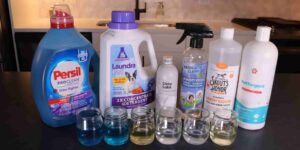Organic dog food has gained popularity among pet owners who prioritize high-quality, chemical-free diets for their furry friends. But what exactly does “organic” mean when it comes to dog food, and how is it regulated? This article explores the regulations surrounding organic dog food, why they matter, and what pet owners should look for when selecting an organic product.
What is Organic Dog Food?

Organic dog food is made from ingredients produced without synthetic pesticides, herbicides, antibiotics, hormones, or genetically modified organisms (GMOs). The term “organic” implies adherence to strict agricultural and processing standards, ensuring a more natural and environmentally friendly product.
Regulating Organic Dog Food
1. United States Regulations
In the U.S., organic pet food is regulated by the USDA National Organic Program (NOP). Key requirements include:
- Organic Certification: Ingredients must meet USDA organic standards.
- Labeling Standards:
- Products labeled as “100% organic” must contain only organic ingredients.
- Products labeled as “organic” must have at least 95% organic ingredients.
- Products with “made with organic ingredients” labels must contain at least 70% organic ingredients.
- Prohibited Additives: Synthetic flavors, artificial colors, and preservatives are not allowed in organic products.
2. European Union Regulations
The EU imposes similar organic certification requirements, focusing on environmentally friendly practices, animal welfare, and the prohibition of synthetic substances.
3. Other Global Standards
Countries like Canada, Australia, and Japan also have specific guidelines for organic certification. These often align with international standards but may vary slightly in implementation.
Why Do Organic Regulations Matter?

- Health Benefits: Strict regulations ensure the absence of harmful chemicals and GMOs, which can be detrimental to dogs' health.
- Environmental Impact: Organic farming and production practices are eco-friendly, reducing pollution and promoting biodiversity.
- Transparency: Certification standards provide assurance to consumers about the quality and authenticity of organic labels.
Challenges in Organic Dog Food Regulations
- Lack of Awareness: Many pet owners are unaware of what organic certifications entail.
- Mislabeling: Some products falsely claim to be organic, making it vital to look for trusted certification seals.
- Cost: Organic ingredients are often more expensive, affecting the affordability of certified organic dog food.
How to Identify Genuine Organic Dog Food
- Look for Certification Seals: Verify the product is certified by recognized organizations like USDA or equivalent.
- Read Ingredient Lists: Check for a high percentage of organic ingredients and the absence of artificial additives.
- Research Brands: Opt for reputable brands with transparent sourcing and production practices.
FAQs About Organic Dog Food Regulations
1. What is the difference between natural and organic dog food?
Natural dog food may not contain artificial additives but isn’t required to meet organic farming or processing standards. Organic dog food must comply with strict certification criteria, including the use of organic ingredients.
2. Are all organic dog foods grain-free?
No, organic dog food can include grains as long as they are organically produced.
3. Can organic dog food help with allergies?
While not guaranteed, organic dog food may reduce allergic reactions in dogs due to the absence of synthetic additives and GMOs.
4. Is organic dog food worth the extra cost?
It depends on your priorities. If you value eco-friendly practices and chemical-free ingredients, organic dog food is a worthwhile investment.
5. How do I verify an organic label?
Look for certifications from recognized organizations such as USDA Organic or other global certifying bodies.
Conclusion
Organic dog food regulations play a critical role in ensuring quality, transparency, and health benefits for pets. By understanding these standards and choosing certified products, pet owners can make informed decisions that align with their pets' well-being and environmental sustainability.














